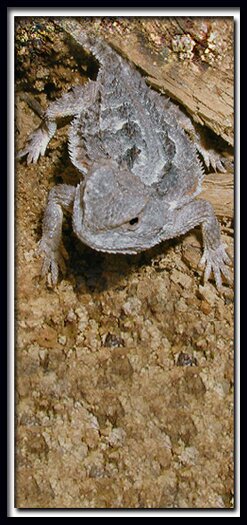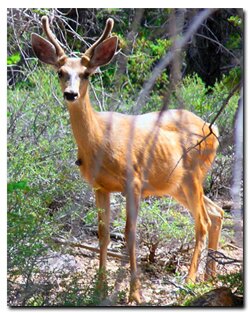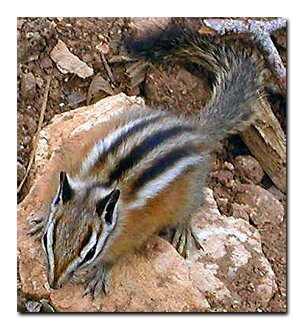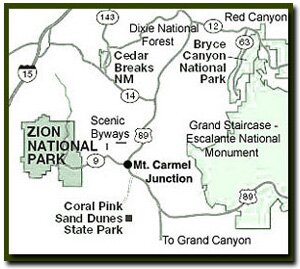 |
||||
|
Cedar Breaks Lodging Camping SR 148 SR-14 Hike Backpacking Vacation DNF Pictures Area Weather |
||||
|
|||||||||||||
Directions to Cedar BreaksU-148 Closure Dates. U-148 to Cedar Breaks closes in the winter due to snow depth. From Las Vegas: Take I-15 north to Cedar City. Take U-14 east from Cedar City to U-148 and turn left to Cedar Breaks. Cedar Breaks Road Map - Cedar Mountain Map 
|

|
|||
|
|
||||
 The bug killing the spruce trees
The bug killing the spruce treesLook close at the trunks of many of the trees in Cedar Breaks and surrounding Dixie National Forest. You will see odd shapes or designs dug into the bark. These are beetle tracks. Normally, the beetles only attack dead trees, but when a beetle epidemic hits, large numbers of beetles kill the living trees as well. Although it may seem to be a problem, the killing of these trees makes room for new growth and is nature's way of keeping the forest healthy. The beetles are a native species to the forest, and nature will be allowed to run its course. In the 1920's, the spruce bark beetle killed the spruce trees on Boulder Mountain near Teasdale. The forest is now young and healthy.
Under normal conditions the spruce trees fight off the attack of the beetle, so the beetles are forced to be content with downed trees. When the beetles reach epidemic numbers they are able to kill healthy trees, overpowering the trees natural sap defense, especially if the trees are subject to drought. Dixie National Forest renews itself about every 300-500 years, but it's usually through the process of fire instead of a beetle epidemic. Recently another beetle, called the Fir Engraver, has been found in the forest and is attacking the Fir trees.
Utah's Dixie National Forest: Cedar MountainCedar Breaks National Monument is surrounded by Utah's Dixie National Forest. From Mt. Carmel Junction, drive north on US-89 to the junction with SR-14. SR-14 is known as Cedar Mountain which is the scenic byway to travel to Cedar Breaks. Once on Cedar Mountain, travel through the beautiful forest, and then turn at the signed highway to Cedar Breaks - SR-148. It's 22 miles from Mt. Carmel Junction to boundary of Dixie National Forest and 45 miles to Cedar Breaks.
Utah's Dixie National Forest: Red Canyon
Red Canyon is a unique part of Dixie National Forest that is not only traveled through on the way to Bryce Canyon, but it has eroded hoodoos like Bryce Canyon and Cedar Breaks. It is found along Scenic Byway 12.
|
|
Cedar Breaks National Monument, Utah
East Zion Lodge
Vacation House
Group Lodging
East Zion Golf
East Zion RV Park
Vacation Packages
Business Retreat
Mileage from
Mt. Carmel Jct.
Zion National Park 12
Bryce Canyon 60
Grand Canyon 85
Cedar Breaks 45
Grand Staircase 9
Dixie Forest 22
Sand Dunes 11
Coyote Butte 57
Red Canyon 47
Tuweep 90
Stay in the heart of the parks, Mount Carmel Junction, and visit the treasures of the Southwest and Utah.
Site Map
Site Map II
Site Map III
Hiking Trails
Bartizan Arch
Spectra Point Trail
Ramparts Trail
Easy Trails
Cascade Falls
Bristlecone Pine
Alpine Pond
Cedar Breaks info
Visitor Center
Fees and passes
Ranger programs
Kid activities
History
Fauna
Flora
Cedar Breaks maps
"I don't know who Mary Cisneros is, but I mean zionnational-park.com
It's a better site than the NPS's anyway."
Written by the authors of the book: Favorite Hikes in and around Zion National Park
Contact Mary to report errors:
|
Zion History |
|---|
All rights reserved © Copyright Zion National-Park dot com
Do not use text, photos or maps without permission © Zion National-Park dot com
Contact the Author Mary Cisneros

 Cedar Breaks National Monument - Fauna
Cedar Breaks National Monument - Fauna


